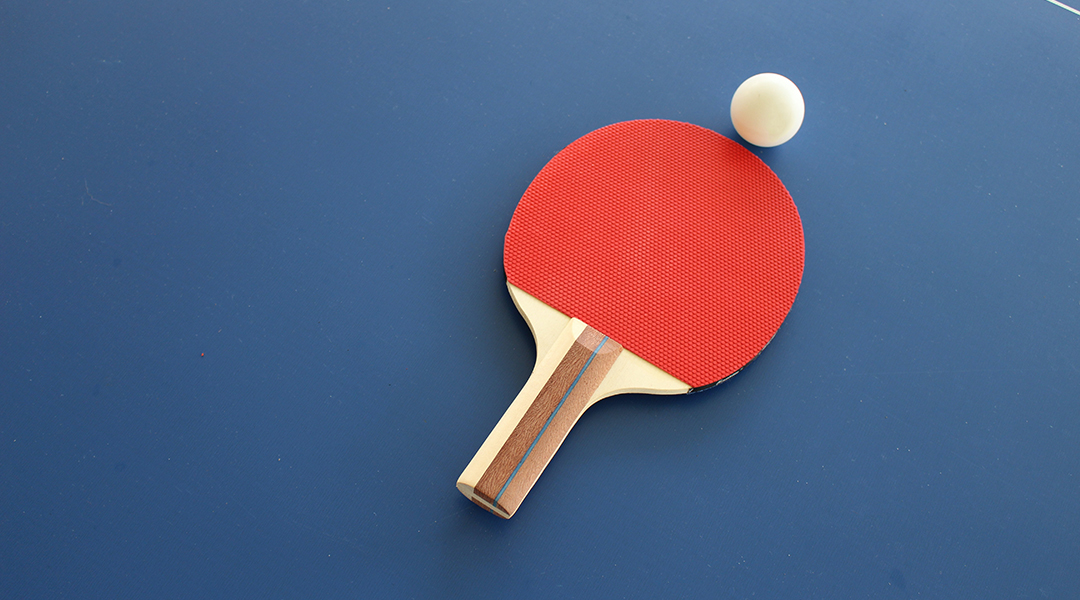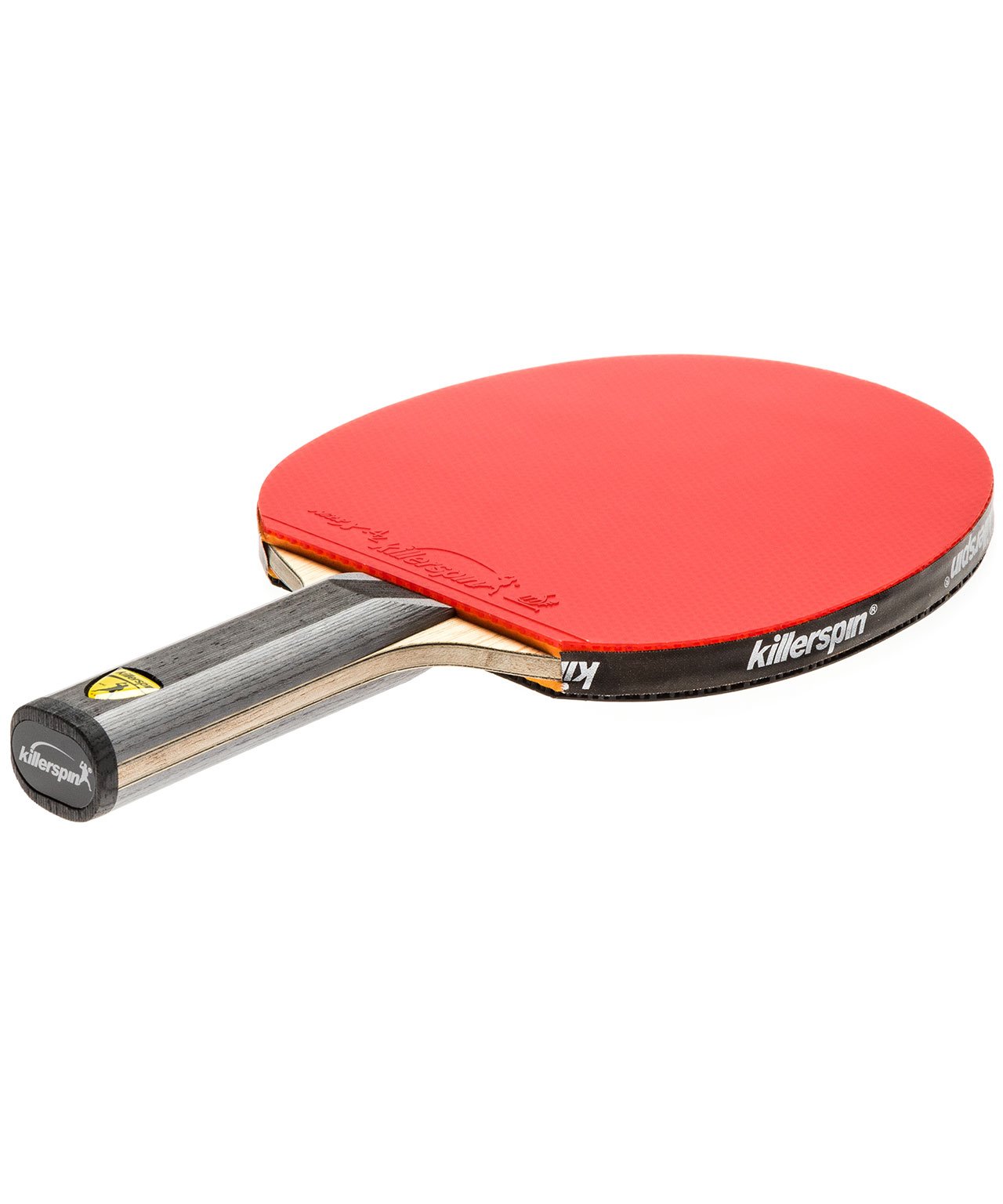A ping pong blade is a key component of a table tennis racket. It forms the foundation for the rubber layers on both sides.
Understanding a ping pong blade is essential for any table tennis player. The blade affects speed, control, and spin. Made from wood and sometimes mixed with carbon or other materials, blades come in various styles and thicknesses. Each type suits different playing techniques and preferences.
Whether you’re a beginner or a pro, knowing about blades can enhance your game. This guide will explore the features, types, and how to choose the right blade for your playing style. Let’s dive into the world of ping pong blades and their impact on your performance.
Introduction To Ping Pong Blades
Ping pong blades are the heart of a ping pong paddle. They play a crucial role in the game. Understanding them is essential for any player.
Importance For Players
The right blade can change your game. It affects your speed, spin, and control. A proper blade helps in better performance.
Professional players choose their blades carefully. They know how a good blade can make a difference. Even beginners should pay attention to their blade choice.
Basic Components
A ping pong blade has several parts. Each part serves a purpose. Here are the basic components:
- Handle: The part you hold. It comes in various shapes and sizes.
- Blade: The wooden part. It is the main body of the paddle.
- Rubber: Covers the blade. Helps in generating spin and speed.
These components work together. A good combination enhances your game.
Consider the weight and thickness of the blade. These factors impact your control and power. Each player has a unique preference.
In summary, the right ping pong blade is vital. It can improve your play and give you an edge.

Credit: en.wikipedia.org
Blade Materials
Understanding the materials used in a ping pong blade is crucial for players. The blade materials greatly impact the game. They determine the speed, control, and spin. Let’s dive into the different materials used in blades.
Wood Types
Wood is a common material for ping pong blades. It offers a natural feel. Different types of wood affect the blade’s performance.
Here are some popular wood types:
- Ayous: Lightweight and flexible. Good for control.
- Koto: Hard and fast. Ideal for aggressive play.
- Limba: Soft and responsive. Provides good feel and spin.
- Balsa: Very light. Excellent for defensive play.
Composite Materials
Composite materials combine wood with other materials. They enhance the blade’s properties. These materials can add speed, stability, and durability.
Popular composite materials include:
- Carbon Fiber: Adds speed and stiffness. Great for offensive players.
- Kevlar: Provides a balance of speed and control. Durable and reliable.
- Zylon: Offers high strength and light weight. Enhances spin and speed.
- Glass Fiber: Adds flexibility and control. Ideal for all-round play.
Using a combination of these materials creates a unique blade. It can suit different playing styles. Choose the right materials for your game.
Blade Construction
The blade construction of a ping pong paddle is crucial for performance. It affects speed, control, and spin. Understanding the construction helps in choosing the right blade.
Plies Explained
A ping pong blade consists of multiple plies of wood or composite materials. The number of plies can vary, typically ranging from 5 to 7. Each ply impacts the performance and characteristics of the blade.
- 5-ply blades: Offer more control and flexibility. Ideal for defensive players.
- 7-ply blades: Provide more speed and power. Suitable for offensive players.
The plies are carefully selected and arranged to create the desired balance between speed and control.
Core And Outer Layers
The core layer of a blade is usually thicker and made from softer wood. It provides the foundation and determines the overall stiffness and flexibility of the blade.
The outer layers are thinner and made from harder wood or composite materials. They impact the blade’s speed and spin capabilities.
| Layer | Material | Function |
|---|---|---|
| Core | Softer wood | Provides flexibility and control |
| Outer Layers | Harder wood or composite | Enhances speed and spin |
Choosing the right combination of core and outer layers is essential. It influences the blade’s performance, making it suitable for different playing styles.
Blade Types
Understanding the different blade types in ping pong is essential for any player. Choosing the right blade can impact your game significantly. Let’s explore the various blade types available and how they cater to different playing styles.
Offensive Blades
Offensive blades are designed for players who prefer an aggressive playing style. These blades offer high speed and power. They help generate quick shots and powerful spins. Typically, offensive blades are made of harder woods or carbon layers. This construction ensures that the blade remains stiff, providing better control over fast-paced games.
Here are some features of offensive blades:
- High speed and power
- Stiff and hard construction
- Enhanced control for aggressive play
Defensive Blades
Defensive blades are for players who focus on control and precision. These blades offer slower speeds and more control. They help in returning spins and maintaining longer rallies. Defensive blades are usually made from softer woods. This allows for more flex, providing better control over the ball.
Key features of defensive blades include:
- Slower speed for better control
- Softer wood construction
- Ideal for returning spins and long rallies
Choosing the right blade depends on your playing style. Offensive players benefit from power and speed. Defensive players need control and precision. Understanding these differences helps you make an informed decision.
Choosing The Right Blade
Player Skill Level
A player’s skill level is crucial in selecting the right ping pong blade.
Playing Style
Consider your playing style when choosing a ping pong blade.

Credit: www.advancedsciencenews.com
Blade Maintenance
Blade maintenance is crucial for any ping pong player. Keeping your blade in good condition ensures better performance during matches. Regular care can extend the lifespan of your blade. Here are some essential tips for maintaining your ping pong blade.
Cleaning Tips
Cleaning your blade is important. Use a soft, damp cloth to wipe the blade. Avoid using harsh chemicals as they can damage the wood. After wiping, let the blade air dry completely before storing it. Clean your blade after each game to remove sweat and dust.
Storage Guidelines
Proper storage of your ping pong blade is vital. Store your blade in a protective case to shield it from dust and moisture. Keep the blade in a cool, dry place away from direct sunlight. Avoid placing heavy objects on top of the blade to prevent warping.
Customizing Your Blade
Customizing your ping pong blade can greatly impact your gameplay. Each player’s style is unique, so your blade should reflect that. Let’s explore how to choose the right handle and rubber for your blade.
Handle Types
The handle type of your ping pong blade affects your grip and control. There are three main types of handles:
- Flared (FL): Wide at the end, providing a secure grip. Ideal for aggressive players.
- Anatomic (AN): Curved to fit the shape of your hand. Offers comfort and stability.
- Straight (ST): Uniform in width. Allows for flexible grip adjustments.
Choose a handle that feels comfortable and suits your playing style.
Rubber Selection
The rubber on your blade determines speed, spin, and control. There are two main types of rubber:
| Rubber Type | Description |
|---|---|
| Pimpled Rubber | Offers more control and less spin. Suitable for defensive players. |
| Inverted Rubber | Provides greater spin and speed. Preferred by offensive players. |
Consider your playing style when selecting the rubber type. The right rubber can enhance your performance.
Top Blade Brands
Choosing the right ping pong blade can improve your game significantly. The blade affects speed, spin, and control. Many brands offer high-quality blades. Here are some of the top blade brands in the market.
Popular Manufacturers
Several manufacturers are well-known for their ping pong blades. These brands have years of experience. They use advanced technology and materials. Let’s look at some of the most popular ones.
Butterfly is a leading brand in ping pong blades. They are known for their quality and performance. Another top brand is Stiga. They offer a wide range of blades for different playing styles. Donic is also a favorite among players. Their blades are designed for precision and control.
Yasaka is another reliable brand. They are famous for their durable and versatile blades. Nittaku is well-respected in the table tennis community. Their blades are crafted with attention to detail.
Recommended Models
Butterfly Timo Boll ALC is a popular choice. It offers a good balance of speed and control. The Stiga Clipper Wood is another recommended model. It is known for its powerful performance.
The Donic Waldner Senso Carbon is great for offensive players. It provides excellent speed and spin. Yasaka Ma Lin Extra Offensive is ideal for aggressive play. It delivers a perfect mix of power and precision.
Nittaku Violin is a preferred model for many. It offers superb control and feel. Each of these models is crafted to meet different playing needs.

Credit: www.killerspin.com
Frequently Asked Questions
What Is A Ping Pong Blade?
A ping pong blade is the main part of a table tennis racket. It provides the foundation for attaching the rubber sheets. The blade affects the speed, spin, and control of the ball.
What Materials Are Ping Pong Blades Made Of?
Ping pong blades are made from wood and composite materials. Commonly used woods include balsa, limba, and koto. Composite materials like carbon fiber enhance the blade’s performance.
How Does Blade Thickness Affect Performance?
Blade thickness impacts speed and control. Thicker blades offer more speed but less control. Thinner blades provide better control but may reduce speed. Choose based on your playing style.
Why Are There Different Blade Shapes?
Different blade shapes cater to various playing styles. Defensive players prefer larger blades for control. Offensive players opt for smaller, faster blades. Shape influences the racket’s balance and performance.
Conclusion
A ping pong blade is key for improving your table tennis game. It affects control, speed, and spin. Choose wisely based on your playing style. Practice regularly to see the best results. Invest in a quality blade for a better experience.
Enjoy your time playing and keep improving. Happy playing!

Hi, My name is Benjamin Fink and I am the author of the ping pong reviewed blog. I am a sports person learning and sharing my knowledge with others about ping pong and other sports.
I have been playing ping pong for the last 17 years and teaching people about the game and writing new things about the game through this blog When finding something new. I have participated in serious ping pong tournaments in my country.
